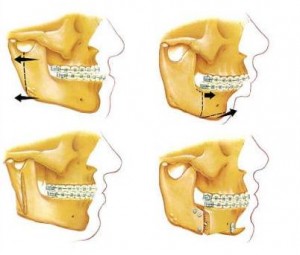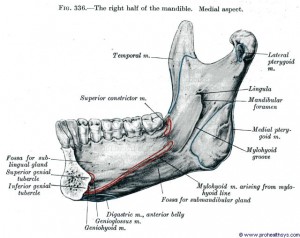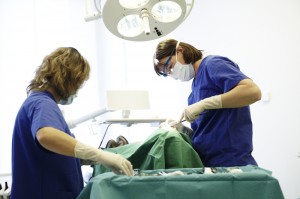A sinus lift is surgery that adds bone to your upper jaw in the area of your molars and premolars. It’s sometimes called a sinus augmentation. The bone is added between your jaw and the maxillary sinuses, which are on either side of your nose. To make room for the bone, the sinus membrane has to be moved upward, or “lifted.” A sinus lift usually is done by a specialist. This could be either an oral and maxillofacial surgeon or a periodontist. Continue reading
Category Archives: Oral Surgery
Salivary gland surgery Part 2
e. Minor Salivary Gland Tumours.
These are rare and virtually all are malignant. They are most common in the palate. The most common type is an adenoid cystic cancer which has a tendency to invade along nerves and has a high incidence of local recurrence irrespective of the treatment employed. Continue reading
Salivary gland surgery Part 1
There are three pairs of major salivary glands located in and around the mouth and throat: the parotid, submandibular and sublingual glands. The parotid glands are the largest and overlie the angle of the jaw in front of the ear. From the gland a duct drains saliva into the mouth. The submandibular glands lie deep to the horizontal portion of the lower jaw and their ducts enter the mouth under the tongue. The sublingual glands lie close to the submandibular ducts. Continue reading
Cap splint
Pediatric mandibular fractures are not commonly encountered. The elasticity of bones in a child prevents loss of continuity of bone and rather results in a bending of a cortex termed as a greenstick fracture. Occlusion is rarely a problem as there is no disruption or mild changes are remodeled during the development of permanent dentition. In case of a severely displaced fracture the treatment option can vary from intermaxillary fixation, cap splints to plating with mini plates or resorbable plates. Continue reading
Orthognathic Surgery: What Is It?
Sometimes surgical procedures might be needed during orthodontic treatment when malocclusion is severe and beyond the limits of treatment with fixed dental braces. This orthodontic surgery procedure is called orthognathic surgery. Continue reading
Preprosthetic Surgery: Preparation of Mouth for Dentures Part 2
Continued from Part 1
Mylohyoid ridge reduction
Mylohyoid ridge is an oblique ridge on the lingual surface of the lower jaw which extends from the level of the roots of the last molar as a bony attachment for the mylohyoid muscles which form the floor of the mouth. Mylohyoid ridge reduction is needed when the gum ridge is sharp and denture pressure can cause significant pain in this area. Continue reading
Preprosthetic Surgery: Preparation of Mouth for Dentures Part 1
The prosthetic replacement of lost teeth frequently, though not necessarily, involves surgical preparation of the remaining soft tissues in the mouth. The aim is to leave a satisfactory base for subsequent placement of prosthetic appliances to enable an edentulous or toothless individual to live comfortably with functioning dentures.
Ideally treatment for these procedures should be planned jointly (by a prosthodontist and oral surgeon). However many procedures of preprosthetic surgery are becoming history due to advancements made in dental science such as the introduction of dental implants. Continue reading
Types of sterilizers used in dental setting
It is vital that the type of sterilizer being used is clearly identified as this dictates not only what can be processed in the chamber but also how the machine is tested and validated.
When purchasing a new machine the cost is obviously a focal point. What is often not apparent is the ongoing cost of validating the machine after purchase. This is particularly essential when purchasing a vacuum sterilizer. Continue reading
Dental osteomyelitis
Dental osteomyelitis (or osteomyelitis of the jawbone) is an acute or chronic jawbone infection, usually caused by bacteria. It is extremely difficult to diagnose and treat. Continue reading
Biophosphate induced oeteoradionecrosis
Bisphosphonate-related osteonecrosis of the jaw (BRONJ) is a condition found in patients who have received intravenous and oral forms of bisphosphonate therapy for various bone-related conditions. Bisphosphonate-related osteonecrosis of the jaw (BRONJ) manifests as exposed, nonvital bone involving the maxillofacial structures. Bisphosphonate-related osteonecrosis of the jaw (BRONJ) is thought to be caused by trauma to dentoalveolar structures that have a limited capacity for bone healing due to the effects of bisphosphonate therapy. Continue reading


